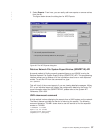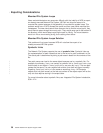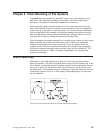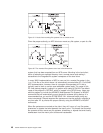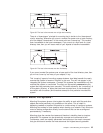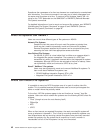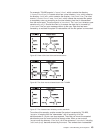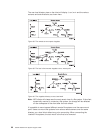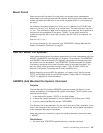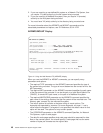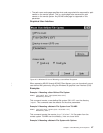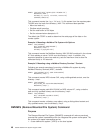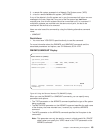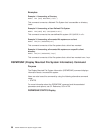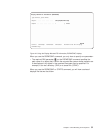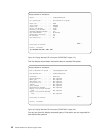
Mount Points
Mount points mark the area of the local client and remote server namespaces
where users have mounted exported file systems. Mount points show where the file
system has been
mounted from
on the server and show where it is
mounted to
on
the client.
For example, the system exports the /home/consults directory from TULAB1 and
mounts it over the /test directory on a remote client. The mount point on the client
is /test. The old directory, /test, and its contents are covered up, and it becomes a
window into the namespace of the server, TULAB1. To see which remote file
system corresponds with a mount point or path, use the DSPMFSINF command. For
example:
DSPMFSINF OBJ('/test')
For more information on this command, see “DSPMFSINF (Display Mounted File
System Information) Command” on page 50.
How Do I Mount File Systems?
Users make remote server file systems accessible to the local namespace using the
MOUNT and ADDMFS (Add Mounted File System) CL commands. The UNMOUNT
and RMVMFS (Remove Mounted File System) commands will remove a mounted
file system from the namespace. The DSPMFSINF (Display Mounted File System
Information) command will provide information about a mounted file system. You
can also reach these commands through a menu. Type GO CMDMFS (Go to the
Mounted File System Commands menu) at any command line.
Before attempting to mount NFS file systems, you need to verify that the correct
TCP/IP configuration exists on your AS/400 system. Please refer to “Configuring
TCP/IP” on page 65 for more information.
ADDMFS (Add Mounted File System) Command
Purpose
The Add Mounted File System (ADDMFS) command makes the objects in a file
system accessible to the integrated file system name space. The file system to be
mounted can be either:
1. a user defined file system (*UDFS) on the local system
2. a remote file system accessed via a local Network File System client (*NFS)
3. a local or remote NetWare file system (*NETWARE).
The directory that is the destination for the mount must exist. After completion of the
mount, the contents of this directory will be “covered up” and rendered inaccessible
to the integrated file system namespace.
Users can issue this command by using the following alternative command name:
v MOUNT
Restrictions:
1. You must have *IOSYSCFG special authority to use this command.
Chapter 5. Client Mounting of File Systems 45
|
|
|
|
|
|
|
|
|
|
|
|
|
|
|
|
|
|
|



